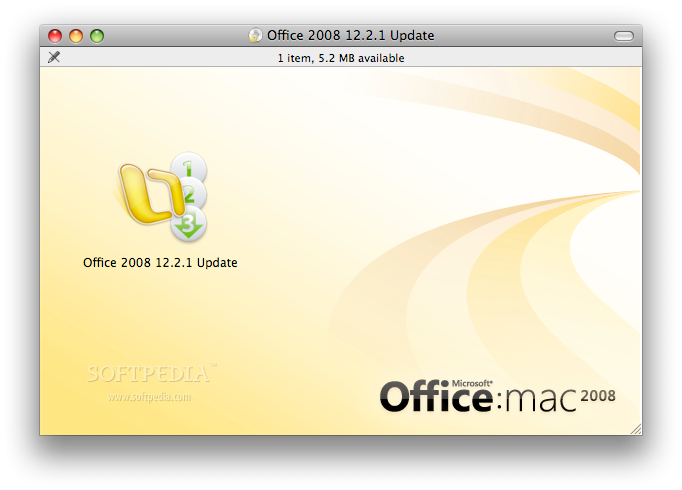- Repair Office 2008 For Mac Windows 7
- Office 2008 For Mac Updates
- Office For Mac 2008 Support
- Microsoft Office Mac 2008 Price
- Repair Office 2008 For Mac
Run Microsoft AutoUpdate. One thing you can guarantee with Microsoft software on Apple products. Microsoft PowerPoint 16.45 for Mac can be downloaded from our software library for free. The actual developer of this Mac application is Microsoft. The unique identifier for this app's bundle is com.microsoft.Powerpoint. The most popular versions of Microsoft PowerPoint for Mac are 14.0, 12.3 and 10.1. To rebuild the database, open Microsoft Office 2008/Office, and then open the Microsoft Database Utility. For more information, open the Database Utility Application, and on the Help menu, click the Database Utility Help.' Microsoft fully supports Office 2016, Office 2019 and Microsoft 365 for Mac on 10.14 Mojave when you have the following Office updates installed: Microsoft 365/2019 - Build 16.17.0 or later. Office 2016 - Build 16.16.2 or later. Skype for Business 16.21.65 or later. For the best experience with 10.14 Mojave, be sure to keep your Office apps up. Entourage 2008 for Mac is an updated version of MS Office with advanced features to manage and recover quick access to your data. However, users may sometimes encounter one of the following messages: Office Database is Damaged; Entourage cannot access your data. To try to fix the problem, rebuild the database; The action could not be completed.
Disk Utility can find and repair errors related to the formatting and directory structure of a Mac disk. Errors can lead to unexpected behavior when using your Mac, and significant errors might even prevent your Mac from starting up completely.
Before proceeding, make sure that you have a current backup of your Mac, in case you need to recover damaged files or Disk Utility finds errors that it can't repair.
Open Disk Utility
In general, you can just open Disk Utility from the Utilities folder of your Applications folder. However, if your Mac doesn't start up all the way, or you want to repair the disk your Mac starts up from, open Disk Utility from macOS Recovery:
- Determine whether you're using a Mac with Apple silicon, then follow the appropriate steps:
- Apple silicon: Turn on your Mac and continue to press and hold the power button until you see the startup options window. Click the gear icon labeled Options, then click Continue.
- Intel processor: Turn on your Mac, then immediately press and hold these two keys until you see an Apple logo or other image: Command (⌘) and R.
- You may be asked to select a user you know the password for. Select the user, then click Next and enter their administrator password.
- From the utilities window in macOS Recovery, select Disk Utility and click Continue.
Select your disk in Disk Utility
Choose View > Show All Devices (if available) from the menu bar or toolbar in Disk Utility.

The sidebar in Disk Utility should now show each available disk or other storage device, beginning with your startup disk. And beneath each disk you should see any containers and volumes on that disk. Don't see your disk?
Repair Office 2008 For Mac Windows 7
In this example, the startup disk (APPLE HDD) has one container and two volumes (Macintosh HD, Macintosh HD - Data). Your disk might not have a container, and it might have a different number of volumes.
Repair volumes, then containers, then disks
Office 2008 For Mac Updates
For each disk that you're repairing, start by selecting the last volume on that disk, then click the First Aid button or tab.
Office For Mac 2008 Support
In this example, the last volume on the disk is Macintosh HD - Data.
Microsoft Office Mac 2008 Price
Click Run to begin checking the selected volume for errors.
Repair Office 2008 For Mac
- If there is no Run button, click the Repair Disk button instead.
- If the button is dimmed and you can't click it, skip this step for the disk, container, or volume you selected.
- If you're asked for a password to unlock the disk, enter your administrator password.
After Disk Utility is done checking the volume, select the next item above it in the sidebar, then run First Aid again. Keep moving up the list, running First Aid for each volume on the disk, then each container on the disk, then finally the disk itself.
In this example, the repair order is Macintosh HD - Data, then Macintosh HD, then Container disk3, then APPLE HDD.
If Disk Utility found errors that it can't repair
If Disk Utility found errors that it could not repair, use Disk Utility to erase (format) your disk.
If your disk doesn't appear in Disk Utility
If Disk Utility can't see your disk, it also can't see any containers or volumes on that disk. In that case, follow these steps:
- Shut down your Mac, then unplug all nonessential devices from your Mac.
- If you're repairing an external drive, make sure that it's connected directly to your Mac using a cable that you know is good. Then turn the drive off and back on.
- If your disk still doesn't appear in Disk Utility, your Mac might need service. If you need help, please contact Apple Support.

